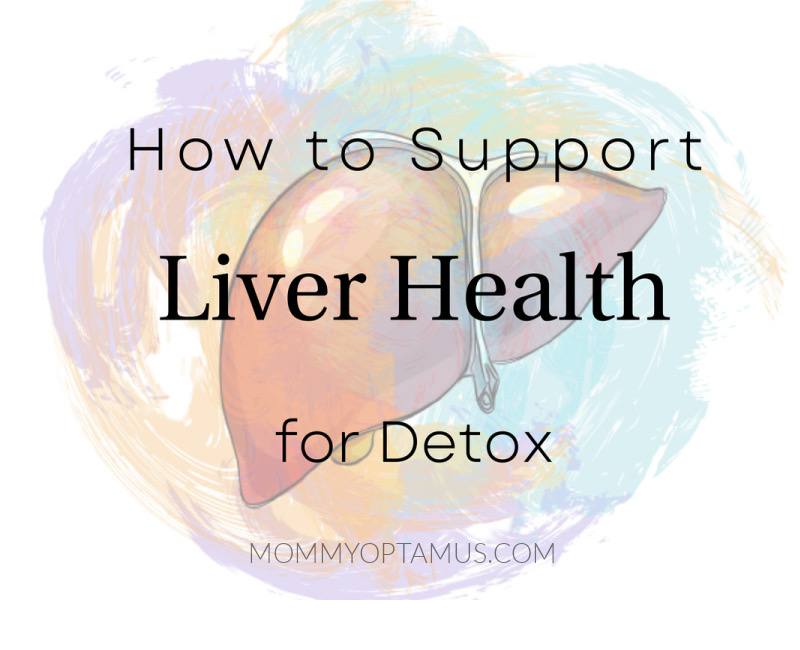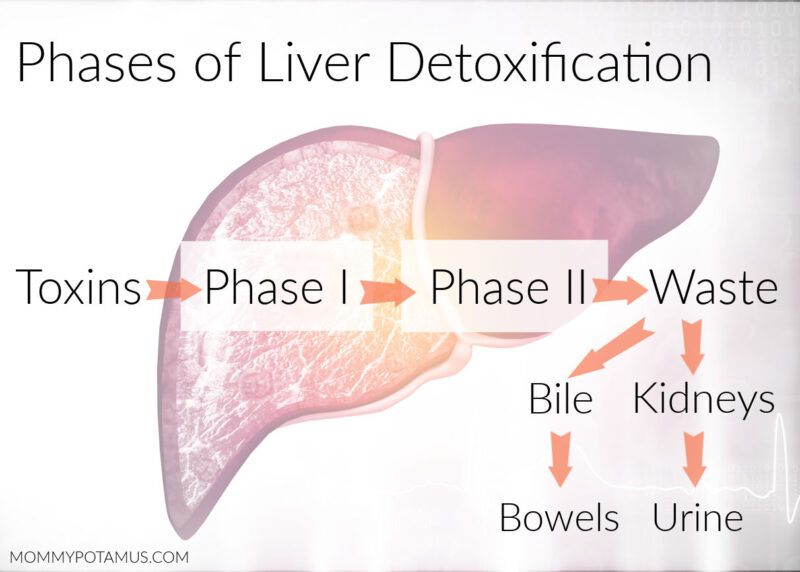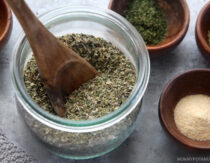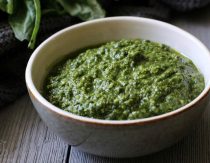
Your liver is the ultimate multitasker.
Every single day it filters out a variety of compounds and decides what to keep, what to recycle, and what to throw away. For example, it stores vitamins and minerals for future use (keep), breaks down old red blood cells and salvages the iron (recycle) and breaks down toxins (throw away).
There are so many other jobs the liver does, but it’s the detoxification aspect we’re diving into today.
Whether it’s pesticide residue, heavy metals, industrial air pollutants or something else, toxins share one thing in common – they’re either water-soluble or fat-soluble. And fortunately for us, we have two primary detox organs that specialize in handling them:
- Our kidneys process and eliminate water-soluble toxins via urine. (Which is why it’s so important to drink enough clean, filtered water.)
- And our liver converts fat-soluble toxins into water-soluble ones using a two-step process called Phase I and Phase II detox.
Unfortunately, as I cover in this article, our innate detoxification pathways are facing an unprecedented workload. That’s why I take extra care to support them, especially Phase 1 and 2 liver detox.
So what exactly are Phase 1 and 2, what slows them down, and how can we support optimal function?
We’ll cover all that below, but first I want to remind you that none of these statements have been evaluated by the FDA, this article is not medical advice, and it is not meant to diagnose or treat any condition. Please talk with your healthcare provider about what approach to detox support is best for you.
Now that we’ve got that out of the way, let’s dive in.

Phase 1 Detox Simplified ^
You wouldn’t use homemade glass cleaner in your dishwasher or soft scrub in your laundry machine, would you? Of course not, because different cleaning formulas are needed for different situations.
In the same way, the liver has its own special formulas for clearing out different types of toxins – both exogenous (from our environment) and endogenous (from metabolic waste produced by our bodies or toxins produced by microbes in our bodies).
Those formulas mostly involve P450 enzymes, which the liver uses to scrub little “attachment sites” onto toxins/metabolic byproducts. (1)
The P450 family of enzymes is responsible for about 90% of the workload, but a few others including monooxygenase (which metabolizes nicotine), alcohol dehydrogenase and aldehyde dehydrogenase (which metabolizes alcohol), and monoamine oxidase (which metabolizes used-up neurotransmitters) help out, too. (2)
Though the technical terms for these “scrubbing” processes are oxidation, reduction, hydrolysis, and dehalogenation, all you really need to know is that they make it possible for other molecules to bond with toxins and drag them out of the body.
Factors That Can Affect Phase 1 Function
Unfortunately, there are a few things that can muck up Phase I. For starters, our liver needs a lot of ingredients – including a wide range of minerals, B vitamins, choline and more – to make the 50+ different P450 enzyme “recipes.”
Many of the enzymes are mineral-dependent, which may seem like no big deal until we consider that soil depletion has significantly reduced the amount of minerals available in our food (even for those eating a healthy diet). (3)
But even when we have the right ingredients, other factors impact how well we make phase 1 enzymes.
For example, variations in gene expression can cause as much as a thousand-fold difference in enzyme production capacity from one person to another. (4) Some of the genes that play a role are CYP450, MTHFR, MTRR, CBS, GST, Nrf2 and SOD.
Foods, herbs, and supplements can also speed up or slow down phase 1. Coffee, for example, speeds up the production of phase 1 enzymes, and grapefruit slows them down. (5) (6)
Now, you might think that it’s best to have the fastest phase 1 enzyme production possible, but actually that’s not always the case.
Phase 1 uses processes like oxidation that can, as you probably guessed by the name, create oxidative stress. In other words, it generates a lot of free radicals that can cause oxidative damage if they’re not dealt with quickly. (7)
Also, some of the phase 1 intermediate products (the toxins that have been partially altered) can actually be more harmful to DNA than the original toxin. And that, folks, is why we need to support the optimal function of phase 2 and 3 to fully neutralize toxins and move them out of our body.
Phase 2 Detox Explained ^
In phase 2, our bodies attach one of a dozen(ish) water-loving molecules to the “docking station” that was created in phase 1. This step increases the weight and polarity of the original molecule, making it easier to drag the toxin out of the body. (8)
Some toxins/metabolic byproducts can only bond to a specific water-loving molecule, while others can bond to one of several.
The process of attaching molecules to the docking station is called conjugation. Depending on the molecule attached it can go by a few different names. For example, methylation is the addition of a methyl group of molecules.
Methylation
When a methyl group is added to the attachment site, it helps detoxify things like:
- Arsenic (9)
- Benzene, toluene, and other compounds found in coal tar, plastic, cigarette smoke, pesticides, perfumes, etc. (10) (11) (12)
- Used up estrogen
- Used up neurotransmitters including norepinephrine, epinephrine and dopamine
If you’ve heard about the MTHFR genetic mutation before, you know that some of us can have challenges with this aspect of detoxification. However, a mutation does not absolutely mean there is an issue, and other factors play a significant role in how well methylation functions.
One of those is nutrition. For this pathway, nutrients including methionine, B12, B9 (folate), B6, B2, glycine, magnesium, zinc, and choline are vitally important. (7)
Sulfation
Sulfation (sometimes called sulfonation) adds a sulfur group that helps detoxify things like:
- Xenobiotics including BPA and butylated hydroxytoluene (13) (14)
- Acetaminophen (Tylenol) (15)
- Used up hormones including estrogen, progesterone, DHEA, melatonin and thyroid hormones (T3 and T4)
- Used up neurotransmitters including norepinephrine, epinephrine and dopamine (methylation also breaks these down)
Nutrients including sulfur (found in cruciferous veggies like cauliflower, broccoli, etc. allium vegetables like onions, and garlic, plus egg yolks and meat), molybdenum, B6, B12, folate, magnesium, and taurine support this pathway.
Glucuronidation
Glucuronidation adds glucuronic acid, which helps detoxify things like:
- Medications (an estimated 40-70% of medications are metabolized by this pathway) (16)
- BPA (which can also be metabolized by sulfation) and phthalates
- Hormones including estrogen, testosterone, DHEA, and T3 and T4 thyroid hormones
- Some mold toxins (mycotoxins) (17)
- Bilirubin (from the breakdown of red blood cells)
Cruciferous veggies, citrus foods (especially the limonene-rich peels) and resveratrol (found in grapes, wine, cocoa, berries and even peanuts) all support the enzymes that drive glucuronidation. (7) (18)
Animal studies also suggest that other nutrients may be helpful, including dandelion, rooibos tea, honeybush tea, rosemary, curcumin, and astaxanthin. (7)
Glutathione Conjugation
Glutathione conjugation adds glutathione, which is both our master antioxidant and a compound that helps detoxify things like:
- Heavy metals including mercury, lead, cadmium and arsenic
- A wide range of industrial toxins
- Pesticides and herbicides
- Mold toxins (mycotoxins) (17)
- Medications including acetaminophen (Tylenol)
Foods that have been found to support glutathione include cruciferous veggies (especially sulforaphane-rich broccoli sprouts), allium veggies (onion and garlic), protein, polyphenol-rich fruits and vegetables, herbs and spices, green tea, and omega-3 fatty acid rich-foods such as fish. (7) (19)
Vitamins C and E are also helpful because they help recycle glutathione. (20)
Glutathione can also be taken in supplement form. (Liposomal is my top choice).
Acetylation
Acetylation adds an acetyl group, which helps detoxify things like:
- Caffeine
- Alcohol
- Some medications
- Histamine
- Compounds found in coal tar, plastic, cigarette smoke, pesticides, perfumes, etc.
Nutrients that support acetylation are vitamins B1, B2, B5, and C. (21)
Amino Acid Conjugation
Amino acid conjugation adds an amino acid like glycine, taurine, glutamine, arginine, and ornithine to help detoxify things like:
- Nonsteroidal anti-inflammatory drugs like aspirin
- Food and personal care preservatives
- Salicylates (found in foods)
Meat and collagen are rich in amino acids that support this pathway. Other nutrients needed include B2, B6, folate and manganese.
Factors That Can Lead To Sluggish Phase 2 Function
A lot of “detox protocols” are notoriously low in protein, and that can be okay in the short-term to give the kidneys an occasional rest. (4)
As a lifestyle, though, low protein consumption reduces the amount of amino acids that are available for completing phase 2.
And just like with phase 1, genetic mutations can also cause as much as a ten-fold difference in phase 3 enzyme production capacity from one person to another. (4) Some of the genes that play a role in this step are COMT, SULT, GSS, GST, UGT and NAT.
Other factors that can cause sluggish phase 2 function are:
- Low intake of the other nutrients listed above, especially sulfur-rich foods, B vitamins, magnesium, zinc, choline, and citrus (both for vitamin C and limonene)
- Chronic toxin exposure, because it depletes the nutrients needed to complete phase 2 (22)
Phase 3 Detox Explained ^
This phase doesn’t happen in the liver, but it’s just as important as the first two. In fact, completing phases 1 and 2 without 3 is like scrubbing down a surface without rinsing it away. Now you’ve just got cleaning product mixed with grime on your surface.
In phase 3, the conjugates (toxins bound to detoxifier molecules) are transported out of our cells and into:
- Our kidneys, where they are then eliminated through urine
- Or into bile, which goes to the gallbladder and then empties into the small intestine, where toxins are then passed via stool
At least that’s how it’s supposed to work.
If we’re not drinking enough water or our gut isn’t functioning well, we can actually end up recirculating the toxins our liver just tried to get rid of.
That’s because “when you have the wrong bacteria and not enough fiber, the bacteria remove the conjugating molecule—the molecule that makes the substance nontoxic—leading to the toxins’ reabsorption.” (4)
Other factors that can impair all the phases of detox include:
- Lifestyle factors like poor nutrition and excess alcohol consumption
- Previous liver damage
- Chronic inflammation (23)
Tips for Loving Your Liver ^
You know the phrase “easy as 1-2-3?” When it comes to supporting the liver, the process looks more like 3 . . .2 . . . 1.
According to Drs. Watts and Davidson, founders of Microbe Formulas, it’s important to make sure phase 3 is working well before actively supporting phase 2 and then working back toward phase 1.
It makes sense when you think about it. Imagine a river with a log jam at the bottom. If you have a bunch of logs at the head of the river that need to be transported down, you need to fix the log jam before you start moving them.
In the same way, if the downstream (phase 3) aspect of elimination is not working well, then toxins that are processed via phase 1 and 2 are going to get stuck and recirculate.
And if phase 2 is not functioning optimally, a highly active phase 1 will generate a lot of inflammation-producing free radicals that aren’t immediately neutralized.
With that in mind, here are some liver-loving nutrients to focus on:
Nutrients that support Phase 3 ^
- Fiber – We need soluble fiber to feed our good bacteria so that the bad guys don’t overgrow and break apart our conjugated toxins, and need insoluble fiber to serve as roughage that keeps things moving.
- Water – We need to drink enough clean, filtered water to effectively eliminate toxins through our urine
- Probiotics and/or Fermented Foods – Modern life has not been kind to our internal ecosystems, so it often takes effort to maintain a healthy balance of beneficial bacteria. In addition to eating lots of fermented foods, I opt to also include a probiotic supplement.
- Anything That Supports Gut Health – A healthy gut is vital for detox. Drinking collagen-rich bone broth is one way to nourish a healthy gut.
Binders like activated charcoal can also sometimes be helpful during a focused period of detoxification. For example, activated charcoal is often used for short-term situations like food poisoning and stomach bugs, but it can also be used for longer periods to support the elimination of mycotoxins (mold toxins) such as ochratoxin. (24) (25)
Something to be aware of, though, is that most binders also absorb vitamins and minerals and can cause nutrient depletion if not taken responsibly.
It’s been part of my first aid kit for many years and I’ve used it effectively on many occasions for short-term situations. However, if ongoing detoxification support is needed using binders, a practitioner should guide the process to make sure it’s done appropriately.
Nutrients that support Phase 2 ^
- Brassica and allium-family vegetables (cabbage, broccoli, broccoli sprouts, cauliflower, onion, garlic, etc.)
- Limonene-rich foods (especially citrus peels)
- Glycine (found in collagen powder, turkey, seaweed, etc.)
- Protein-rich foods (meat, fish, eggs, and dairy products)
- Choline-rich foods (eggs, caviar, liver and other organ meats)
- Folate (green leafy vegetables, liver, beans, sunflower seeds, etc.)
- Other B vitamins (leafy greens, bee pollen, salmon, liver and other organ meats, oysters/clams/mussels, sunflower seeds, etc.)
- Vitamin B12 (animal products like meat, eggs and dairy products)
- Foods high in cysteine (meat, lentils, yogurt, cheese, eggs, sunflower seeds, other nuts and seeds, etc.)
- Vitamin C (peppers, cabbage, citrus fruits, baobab powder) (4) (26)
If you’re like me and you’re thinking, “Whoa, liver covers a lot of these categories but I don’t know how I’d get my family to eat it very often,” I hear you. My family is the same way, which is why we all take these grass-fed liver capsules instead.
Nutrients that support Phase 1 ^
- Protein (meat and eggs)
- B vitamins (meat, especially liver and other organ meats, eggs, leafy greens, bee pollen, salmon, oysters/clams/mussels, sunflower seeds, eggs, etc.)
- Brassica and allium-family vegetables (cabbage, broccoli, broccoli sprouts, cauliflower, onion, garlic, etc.)
- Vitamin C-rich fruits and veggies (except grapefruit, which slows down phase 1)
- Antioxidant-rich foods and herbs (milk thistle, turmeric, green tea, beets)
- Foods and herbs that are rich in a wide range of beneficial minerals (oatstraw or nettle tea, for example).
To recap, when the liver needs extra love many practitioners recommend starting with Phase 3 before working backwards. However, general recommendations have their limitations, and I recommend getting personalized input from a qualified practitioner when needed.
Oh, and if you’re wondering how liver detoxification fits into the bigger picture of overall body detox, check out this article.
Want more research-backed natural remedies?
No problem, I’ve created a free ebook for you – Kitchen Apothecary: 25+ Natural Remedies Using Ingredients From Your Pantry – as a gift for signing up for my newsletter. You’ll also get updates when I post about safe essential oils for pregnant/breastfeeding mamas, exclusive gifts and coupons (I was able to give away a jar of free coconut oil to anyone who wanted it recently!), plus other goodies.
Sign up using the form below.
Sources
1. Stanley, L.A. (2017) Pharmacognosy
2. Tom Lynch and Amy Price (2007) The Effect of Cytochrome P450 Metabolism on Drug Response, Interactions, and Adverse Effects
3. Scientific American (2011) Dirt Poor: Have Fruits and Vegetables Become Less Nutritious?
4. Pizzorno, Joseph (2017) The Toxin Solution: How Hidden Poisons in the Air, Water, Food, and Products We Use Are Destroying Our Health–And What We Can Do To Fix It
5. Dr. Libby (2021) Is caffeine benefiting your health?
6. Jayaveera, Yogananda K. et. al. (2014) Pharmaceutical Biochemistry
7. Romilly E. Hodges and Deanna M. Minich (2015) Modulation of Metabolic Detoxification Pathways Using Foods and Food-Derived Components: A Scientific Review with Clinical Application
8. Croom, Edward (2012) Metabolism of xenobiotics of human environments
9. Gebel, TW (2002) Arsenic methylation is a process of detoxification through accelerated excretion
10. Liu, Yanli et. al. (2019) CYP1A1 methylation mediates the effect of smoking and occupational polycyclic aromatic hydrocarbons co-exposure on oxidative DNA damage among Chinese coke-oven workers
11. Centers for Disease Control and Prevention (CDC) How Tobacco Smoke Causes Disease: The Biology and Behavioral Basis for Smoking-Attributable Disease: A Report of the Surgeon General.
12. J. Michałowicz and W. Duda (2007) Phenols – Sources and Toxicity
13. Stowell, Cheri L (2006) A role for sulfation-desulfation in the uptake of bisphenol a into breast tumor cells
14. National Library of Medicine. Butylated hydroxytoluene
15. Gregus, Z et. al. (1994) Sulfation of acetaminophen and acetaminophen-induced alterations in sulfate and 3′-phosphoadenosine 5′-phosphosulfate homeostasis in rats with deficient dietary intake of sulfur
16. Wells, Peter G et. al. (2004) Glucuronidation and the UDP-glucuronosyltransferases in health and disease
17. Li, Peng et. al. (2020) Detoxification of Mycotoxins through Biotransformation
18. Oregon State University. Resveratrol
19. Perchellet, J P et. al. (1986) Effects of garlic and onion oils on glutathione peroxidase activity, the ratio of reduced/oxidized glutathione and ornithine decarboxylase induction in isolated mouse epidermal cells treated with tumor promoters
20. Deanna M. Minich and Benjamin I. Brown (2019) A Review of Dietary (Phyto)Nutrients for Glutathione Support
21. Rakel, David (2017) Integrative Medicine 4th Edition
22. Kidd, PM. (1997) Glutathione: systemic protectant against oxidative and free radical damage
23. Tamási, V et. al. (2003) Some aspects of interindividual variations in the metabolism of xenobiotics
24. Balch, James et. al. (2016) Prescription for Natural Cures (Third Edition): A Self-Care Guide for Treating Health Problems with Natural Remedies Including Diet, Nutrition, Supplements, and Other Holistic Methods
25. Rotter, R G et. al. (1989) Influence of dietary charcoal on ochratoxin A toxicity in Leghorn chicks.
26. Wen, He et. al. (2013) Enhanced Phase II Detoxification Contributes to Beneficial Effects of Dietary Restriction as Revealed by Multi-platform Metabolomics Studies





I made your liver detox tincture and would like for you to make it available again.